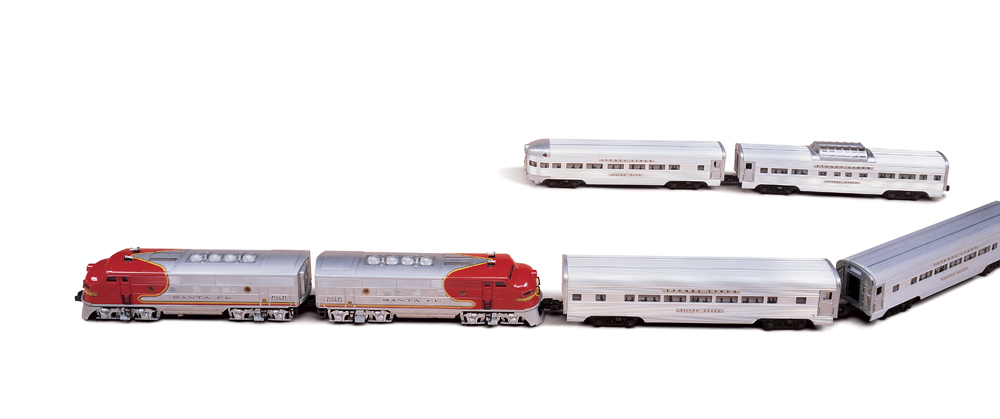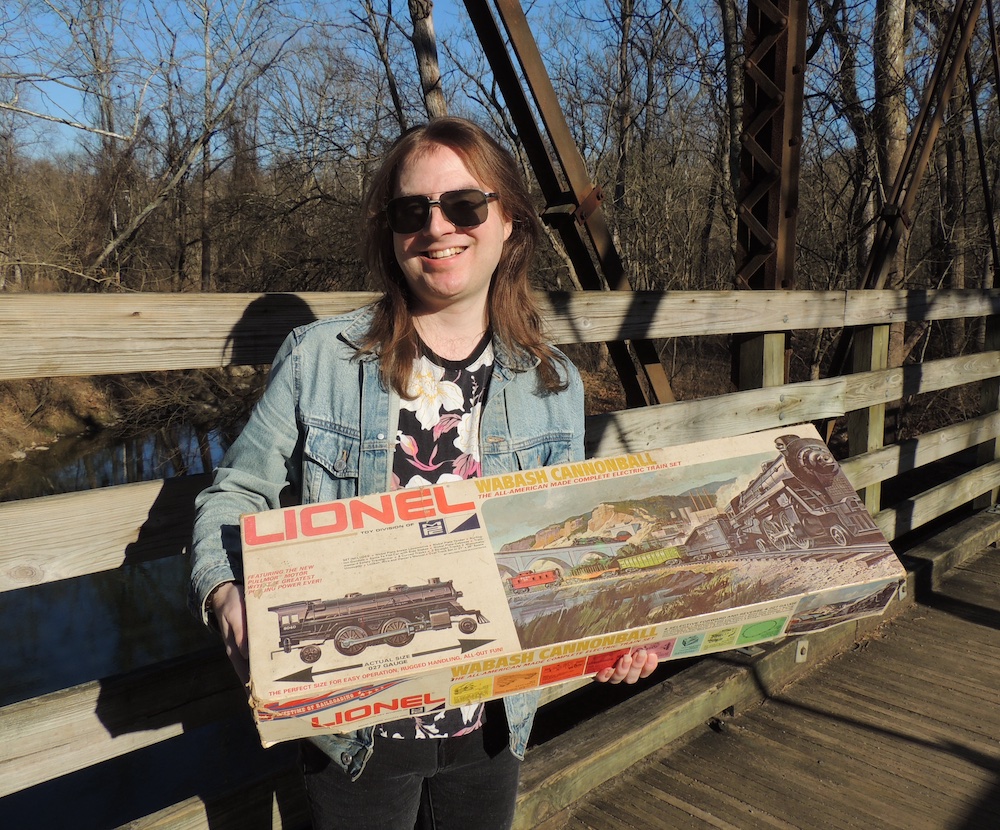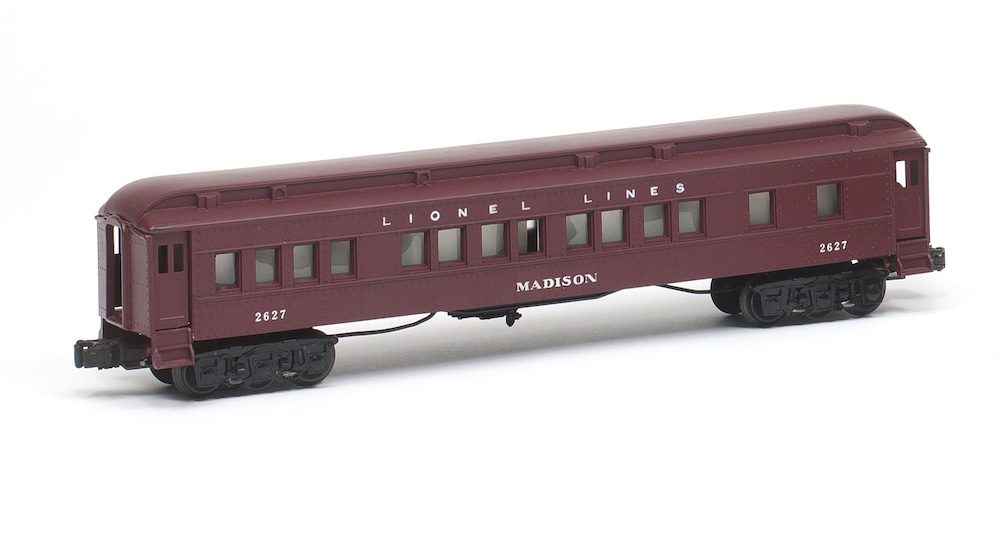A Lionel Santa Fe passenger train outfit from 1952 is widely regarded as one of the best the company ever made. During the holiday season that year, the train maker introduced set No. 2190W, also known as the Super Speedliner, at the top of its O gauge lineup. That magnificent four-car passenger consist featured the iconic nos. 2343 Santa Fe F3 powered and unpowered A units on the point. They pulled a pair of gleaming Pullman coaches plus a dome car and an observation.

Enthusiasts had eagerly awaited such a train since 1948 when Lionel announced the Santa Fe F3. Unfortunately, the maker didn’t have near-scale models of the streamlined cars and the iconic locomotives were relegated to freight duty in various sets.
That’s not to say models of the streamliners didn’t exist. American Model Toys, a small, dynamic firm based in Auburn, Ind., offered several different extruded-aluminum passenger car models. They included a baggage car, coaches, diner, dome car, combination car, and an observation. They also had realistic Santa Fe nameplates and were compatible with Lionel products.
A Lionel Santa Fe passenger train outfit
Decision makers at Lionel’s headquarters and its factory quickly became aware of what AMT was doing. Beginning around 1950 plans were drawn up for Lionel’s own streamlined O gauge cars to go with the Santa Fe F3s or its New York Central companions (No. 2333).
Project delays from the 1950 outbreak of the Korean War in were resolved in 1951. The advance catalog in the initial weeks of 1952 showed the new extruded-aluminum cars inaugurating the no. 2500 series. Curiously, they had nameplates – not for the Santa Fe or one of its crack trains, but instead for the California Zephyr.
Introduced in March of 1949, the California Zephyr – promoted as “The Most Talked About Train in America” – carried passengers between Chicago, Ill., and Oakland, Calif., via the Chicago, Burlington & Quincy; the Denver & Rio Grande Western; and the Western Pacific.
California Zephyr connection
Lionel didn’t yet catalog any Burlington or the Rio Grande locomotives. However, its 1952 line featured a third road name for the popular F3: the No. 2345 Western Pacific. Sales executives might have envisioned a miniature version of the California Zephyr.
Minds evidently changed between the time the advance catalog was issued and the consumer catalog came out. The latter showed the three streamliners with nameplates stating they belonged to Lionel Lines. Traces of the California Zephyr had vanished, probably because it was associated with the Midwest and West. The Lionel idea men likely wanted to appeal to enthusiasts everywhere with the generic naming.
Thus emerged the 2190W outfit, an instant classic when it arrived in stores. It carried a retail price of $89.50 (about $950 today). Interestingly, the four passenger cars carried specific names, but not from the Santa Fe. The nos. 2531 Silver Dawn observation, 2532 Silver Range Astra Dome, 2533 Silver Cloud Pullman, and 2534 Silver Bluff Pullman modeled cars from the CB&Q.
The link with the California Zephyr failed to be totally erased. Lionel used those names throughout the 1950s.














I have this wonderful set but with a powered A and dummy B and dummy A.